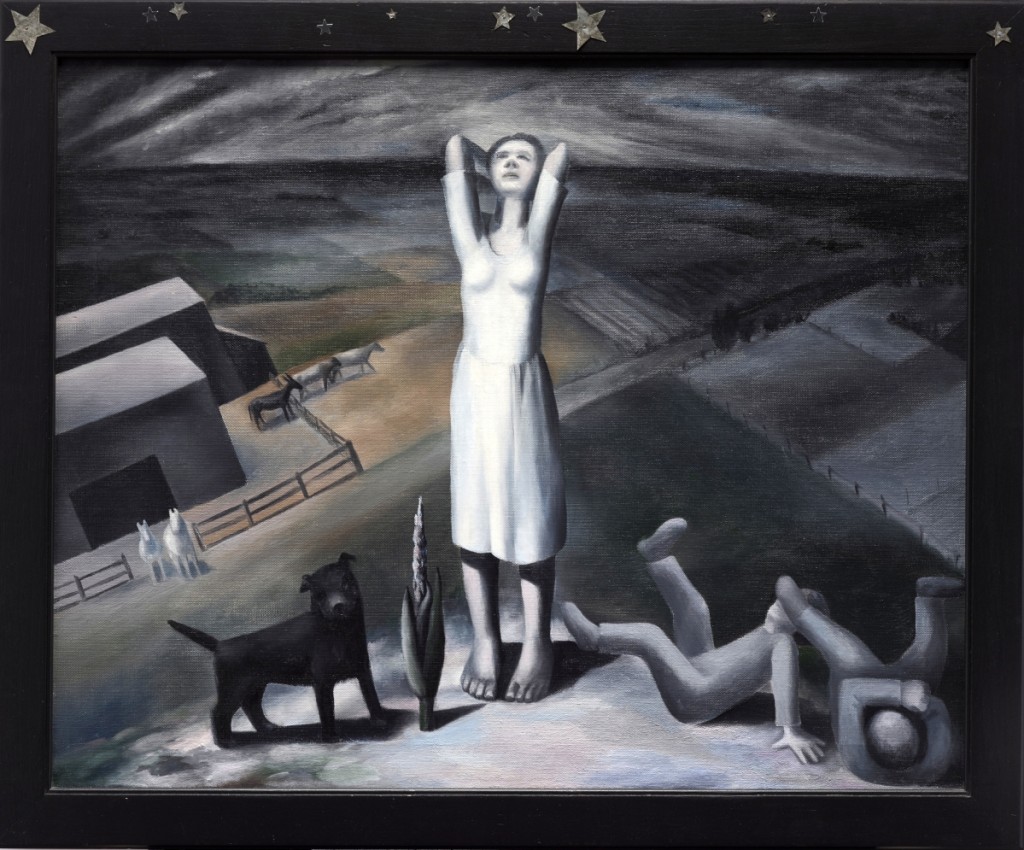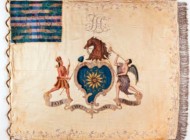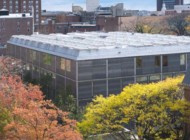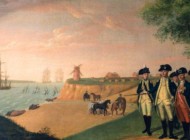
“Star Gazing in Texas” by Ida Ten Eyck O’Keeffe, 1938, oil on canvas, Dallas Museum of Art, general acquisitions fund and Janet Kendall Forsythe fund in honor of Janet Kendall Forsythe on behalf of the Earl A. Forsythe family, 2017.36.
DALLAS – The Dallas Museum of Art (DMA) presents the debut solo museum exhibition of works by Ida Ten Eyck O’Keeffe and the most comprehensive survey of the artist’s work to date. “Ida O’Keeffe: Escaping Georgia’s Shadow” brings together more than 40 paintings, watercolors, prints and drawings for the first time, including six of the artist’s seven lighthouse paintings, whose previously unknown locations were revealed during exhibition research and which have not been exhibited together since 1955. The exhibition explores Ida’s mastery of color and composition, which caught the eye of critics, as well as her complex relationship with her well-known sister Georgia O’Keeffe and the affect it had on Ida’s life and professional aspirations.
The exhibition is the first venue of a national tour and will be on view in Dallas through February 24.
Ida Ten Eyck O’Keeffe (1889-1961) was a professionally trained artist who graduated with an MFA from Columbia in 1932. Her small triumphs as an artist became a source of competitive tension between Ida and her acclaimed sibling Georgia, who eventually withheld support of her younger sister’s professional ambitions. Unlike Georgia, who had the early support and promotional expertise of her husband, Alfred Stieglitz, Ida struggled to keep one foot in the art world of New York while teaching on short-term contracts at various colleges along the Eastern seaboard, the South and the Midwest during the Great Depression of the 1930s.
Organized chronologically, “Ida O’Keeffe: Escaping Georgia’s Shadow” begins with O’Keeffe’s paintings of the late 1920s and early 1930s, which appeared in her first exhibitions in gallery shows in Wisconsin and New York. Her MFA studies brought a new sophistication to her work, most notably showcased through six of the seven documented lighthouse paintings she created and exhibited in 1933. To produce these abstracted representations, O’Keeffe relied on “dynamic symmetry,” a compositional concept that linked art and mathematics.
By the late 1930s, O’Keeffe’s work took another great shift toward a regionalist look that, although more subdued and lyrical, is also undergirded by the same structural principles from earlier in the decade. Throughout, she was also a printmaker who used an electric iron as her printing press to make her monotypes. The exhibition will include a selection of several monotypes by the artist, as well as etchings and drypoints.
Offering additional context for O’Keeffe’s practice, the exhibition features ten photographs of her by Stieglitz. Created during a period when the sisters were still close, drawings and photographs display the enjoyment they took in each other’s company prior to their estrangement in the early 1930s. Some of Stieglitz’s images reveal his fascination with Ida, and his suggestive inscriptions on their reverse indicate that he would have welcomed a relationship of a more intimate nature.
The Dallas Museum of Art is at 1717 North Harwood. For information, 214-922-1200 or www.dma.org.











